The Stamped blog
Complete Guide to Customer Insights (In Every Stage of the Funnel)
Discover how customer data, from zero-party to third-party, fuels smarter marketing decisions. Learn how Stamped's insights and integrations help drive engagement, retention, and personalization at every stage of the funnel.
Customer Insights
Loyalty
by Teala Beischer

All of these questions can be answered when brands have the right data. This can range from purchase history to behavioral insights to customer sentiments and more. According to Forbes, companies that adopt data-driven marketing strategies are six times more likely to be profitable year-over-year compared to those that don’t. However, while 64% of marketing executives believe data is crucial in today’s landscape, not enough brands are taking advantage of it – 87% of marketers say data is their most under-utilized asset.
If brands want to connect with their customers to boost sales, engagement, and loyalty, they need to understand the importance of customer data.
What other hot topics in marketing do brands need to know about? Check out our guide to ecommerce’s biggest trends for 2023.
Comparing the different types of customer data
Zero-party data
Zero-party data, first introduced and defined by Forrester Research in 2018, is information that customers voluntarily share with a brand. It’s sometimes referred to as “explicit data”, as customers intentionally provide their information with the expectation that they will get something in return. Brands typically collect zero-party data through preference centers, polls, surveys, and reviews. From there, they might offer a reward like a discount code, a free sample, or exclusive content like an e-book or a video.
Unlike first-party data, customers don’t have to provide zero-party data to engage with a brand’s products and services. While they need to share basic information like their name, shipping address, and payment details to complete an online purchase, they don’t have to answer a survey or write a review if they choose not to.
Zero-party data is the most relevant and accurate type of data, as customers explicitly tell brands who they are and what they’re interested in. For example, they might answer a poll about their favorite products or complete a survey about the kinds of marketing content they’re most likely to engage with. Customers who provide zero-party data are typically the most valuable since they’re proactively trying to build relationships with their favorite brands.
Though reviews and surveys are common tactics for collecting customer information, the concept of zero-party data is still evolving, and many brands are unsure of what to do with it. According to a recent Forrester study, 82% of marketing firm respondents have access to zero-party data, but 42% admitted they don’t know how to use it.
Discover what every marketer needs to know about zero-party data by watching our webinar with Jeremiah Prummer, CEO of KnoCommerce.
First-party data
First-party data is information that customers directly share with brands when engaging with their products and services. This includes contact information, purchase history, and behavioral data like their browsing activity. Brands typically collect first-party data through tracking pixels, CRMs, and other marketing tools, such as their email and social platforms.
Compared to zero-party data, first-party data is considered less relevant and accurate since it doesn’t account for customers’ intentions. Opening a marketing email or visiting a product page doesn’t necessarily mean they want to read the email or purchase the product. Still, first-party data can be highly effective for building customer profiles and marketing campaigns. For example, brands can use abandoned carts to send reminder emails or purchase history to offer personalized recommendations.
The main advantage of first-party data is that brands don’t have to ask customers to take additional steps like answering a poll or writing a review in order to collect it, reducing potential friction. However, this can also be a double-edged sword since customers might not be aware of what information brands have about them, which may lead to what’s commonly known as “the creep factor”.
Consumers and regulatory organizations are becoming increasingly cautious about data privacy and ownership. Brands need to be careful with what information they’re collecting, using, and sharing. Around 71% of customers say they would stop doing business with a brand if it shared their personal information without their permission.
Second-party data
Second-party data is information that brands purchase from another organization, usually a trusted partner. Companies share this information so they can collectively target and acquire each other’s audiences. Since second-party data is another brand’s first-party data, it includes contact information, purchase history, and behavioral insights. This information is then used to create ad campaigns, content strategies, and other marketing efforts for driving new business.
Compared to zero and first-party data, second-party data is quicker and easier to collect. However, it’s much riskier and far less relevant. As mentioned previously, customers are concerned about how their personal information is being used and shared. They might end their relationships with both brands if they feel their privacy was violated. Brands also risk spending significant amounts of money on information that isn’t as useful or accurate as it could be.
Third-party data
Third-party data is information that brands purchase from unrelated organizations, such as data vendors and DaaS (data-as-a-service) companies. Similar to second-party data, third-party data is a compilation of other brands’ first-party data. It includes contact information, user feedback, and behavioral insights. This information is then used to target and acquire new customers.
Third-party data is the riskiest and least relevant type of data. It’s conducted through random sampling and collected from multiple sources, so brands often struggle to find information relating to their existing customers or target audiences. Brands should only consider purchasing third-party data if they want to look at overall consumer behavior and industry trends.
Benefits of data-driven marketing
Offers actionable insights
Some brands rely heavily on industry standards and best practices to inform their strategies. While this can help in the initial planning stages, it can also lead to a misunderstanding of their own business and customers.
For example, do their customers want new innovations or do they prefer classic designs? Are their customers active on social media or are they more likely to respond to emails and text messages? When rewarding customers for their loyalty, do they want free gifts, exclusive content, or discount codes?
Data helps brands identify their customers’ needs and interests, as well as their business’s strengths and weaknesses. They might look at product sales to identify their best sellers or website activity to determine their most-visited pages. They can also use this data to determine which products aren’t selling well or which pages have the highest bounce rate.
Brands can combine quantitative and qualitative data to gain actionable insights into what to do next. For example, a leading candle brand with Stamped leverages zero-party data to identify potential product testers. They start by inviting customers who regularly write reviews to join their test group, then send them new products before their official release. This gives them the opportunity to quality test their products and collect early feedback and reviews, which they can showcase before the product launch.
If brands want to strengthen their decision-making processes and accelerate business growth, they need to track, analyze, and utilize their customer data.
Learn how StampedIQ can help you contextualize and analyze your customer data to empower smarter business decisions.
Nurtures customer relationships
Brands often struggle to build customer profiles beyond basic statistics like what they’re buying and how much they’re spending. When brands create a well-rounded strategy for capturing and leveraging data, they gain additional insights like purchase intent and customer sentiment.
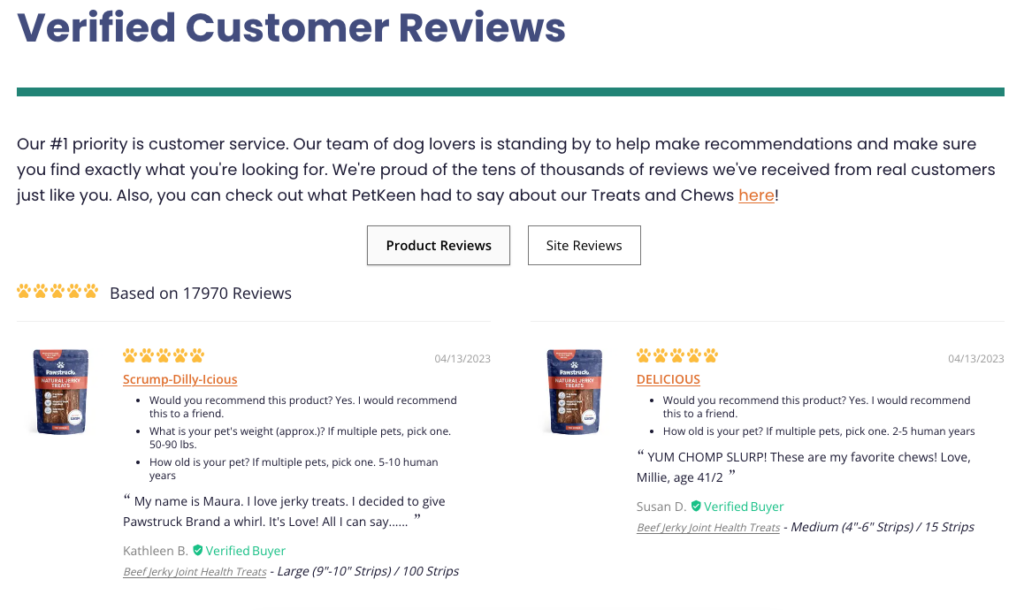
Brands commonly use polls, reviews, and surveys to get a better understanding of how customers think and feel. With Stamped, brands can send review requests via email and SMS, implement Checkout Reviews to learn why customers purchased something, and collect NPS scores to measure overall satisfaction. They can also leverage our Gorgias integration to connect their reviews and ratings data with their support tickets, helping support teams nurture customer relationships with the help of clear, direct insights.
From there, they can use this data to create detailed customer profiles and segment customers by purchase frequency, purchase intent, and so on. Then they can develop content and messaging tailored to each segment.
For example, they can run separate ad campaigns for customers who value price versus customers who value quality. They can use different email CTAs based on whether customers are more likely to read a blog article or watch an explainer video. These data-driven efforts help target new audiences and build deeper connections with existing customers.
Supports personalization efforts
Customers are no longer satisfied with generic messaging and mass marketing. 71% of consumers expect personalized experiences when engaging with brands, and 76% experience frustration when they don’t get them. This is often because brands lack the right information – about 78% of companies don’t have enough customer data to create effective personalization strategies.
According to Accenture, 83% of customers are willing to share their data in exchange for personalized brand experiences. This includes product recommendations, targeted promotions, and tailored messaging and content based on their behavior. For example, brands can provide suggestions based on past purchases and send reminders based on their website activity. With Stamped, brands can leverage our Klaviyo, Attentive, and Drip integrations to run personalized abandoned cart campaigns, re-engagement strategies, and product recommendations via email and SMS. According to Attentive’s 2023 SMS Marketing Benchmark report, 58% of respondents use text subscriber data to segment their customers based on their interests, while 44% use it to craft personalized content.
These personalized touchpoints help recognize and reward customers for their engagement. They also encourage customers to continue interacting with the brand, as the more data they provide, the more personalized their experiences will become.
Boosts engagement, sales, and retention
Data-driven personalization impacts customer behavior in every stage of the funnel, driving new business and re-engaging existing customers. 76% of customers are more likely to consider purchasing from brands with personalization, while 78% are more likely to recommend brands with personalization to their family and friends.
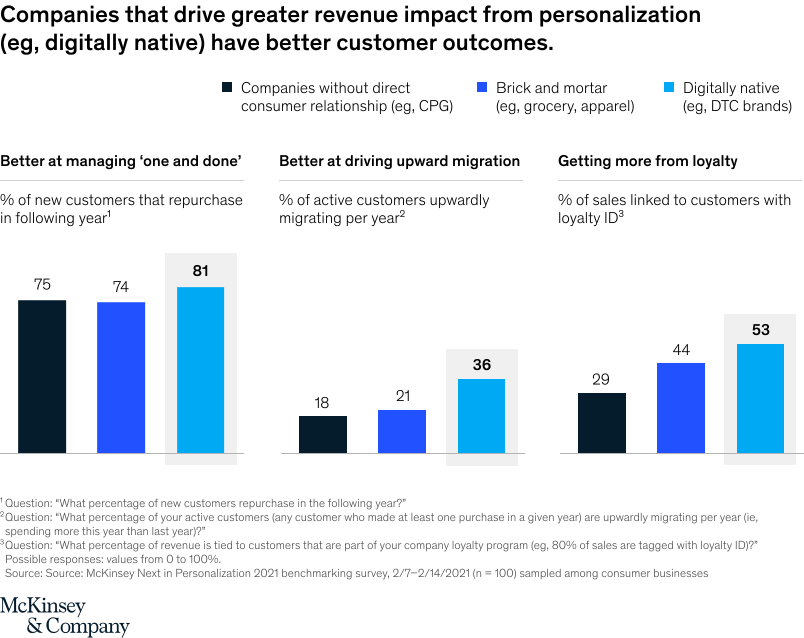
Data-driven marketing can also result in as much as a 10 to 25% revenue lift due to increases in repeat purchases, average order value, and loyalty program engagement. McKinsey & Company “found that companies that excel at personalization generate 40% more revenue” than those that don’t.
For example, as mentioned previously, a brand might run an ad campaign targeting customers based on their specific interests, which can only be done with the right data. Personalized ad content gives customers a better sense of what’s being offered and how it addresses their individual needs, resulting in more qualified leads and higher chances of conversion.
Best practices for data-driven marketing
1. Prioritize compliance and transparency
According to a 2021 consumer survey, 81% of customers say trust is one of the most important factors in making a purchase decision, with 61% attributing trust to transparency. However, only 34% of survey respondents actually trust the brands they use. Reasons for increased consumer skepticism include hidden costs, lack of social responsibility, and privacy violations.

Brands need to practice data transparency to gain consumer trust. To start, they should be open about how customer data is being collected and used. 77% of customers would trust brands more if they were told how sharing their data would improve their experiences. For example, when asking for customers’ email addresses, brands should explain what kinds of emails to expect. They should also build clear internal processes for how to store and manage data. This reduces the risk of information being lost, corrupted, or stolen.
Lastly, brands need to follow best practices for staying compliant with data protection laws. These laws regulate how brands collect, store, use, and share information. They also explain what rights customers have to their own data and privacy. Some of the most common data laws include the General Data Protection Regulation (GDPR) in Europe, the Personal Information Protection and Electronic Documents Act (PIPEDA) in Canada, and state-wide laws like the California Consumer Privacy Act (CCPA).
2. Connect your marketing tools
Collecting, tracking, and analyzing customer data across multiple platforms can get confusing quickly. Brands might struggle to make connections between different consumer touchpoints when the relationship isn’t immediately obvious.
To avoid losing valuable information and insights, brands should look for ways to build an integrated technology stack. With the right integrations, brands can easily share data between their marketing tools without having to compromise. This will help improve their workflows, identify pain points, and inform their business decisions. For example, linking website activity with email engagement can help them better target their customers and increase their chances of conversion.
With Stamped, brands can connect the tools they already use to run their reviews and loyalty strategies. For example, they can leverage our Attentive integration to send automated text messages based on consumer behavior. They can use our Klaviyo integration to automate the buyer’s journey and sync customer properties to their profiles. These types of integrations reduce the amount of time and resources needed to manage customer data so brands can focus on how to use the data instead.
3. Practice progressive profiling
When collecting data via form, poll, or survey, brands should ask for as little information as possible to increase the chances of conversion. Customers don’t want to answer polls with dozens of options or complete surveys with dozens of questions, especially if the options or questions aren’t immediately related to what they’re trying to do.
For example, brands shouldn’t request their shipping address or credit card information until they’re actively making a purchase. Instead, they should ask for their name and email address, then progressively ask for more information to build trust. With Stamped, brands can exercise progressive profiling in their reviews and loyalty strategies. For Reviews, they can start by collecting names, email addresses, and ratings. They can also create custom forms to ask more personalized questions and enhance customer profiles over time. With our KnoCommerce integration, they can also add Checkout Reviews to ask customers why they purchased something, connecting purchase intent to user profiles. For Loyalty, brands can gradually collect purchase preference, frequency, and activity data as customers engage with their loyalty program.
This practice of progressive profiling helps brands create detailed buyer profiles of high-value customers who actively want to form stronger relationships with them. It also helps them collect more data, as customers are willing to provide more information over longer periods of time, rather than be asked to do it all at once.
4. Offer incentives and rewards
The best way to get customers to answer a poll, complete a survey, or write a review is to offer an incentive. Brands can ask customers to provide suggestions for their next product or how to improve their shopping experience, then incorporate user feedback into their strategies. This helps customers understand the value of sharing their data and feel more connected to their favorite brands.

Brands can also offer direct rewards like exclusive content, free gifts, and discounts in exchange for a survey response or product review. In addition to collecting valuable data, this can also incentivize more engagement and repeat purchases. For example, with Stamped, brands can ask customers to write a review to receive a discount code in return, motivating them to make another purchase in the near future.
5. Optimize your content strategies
When working with data, brands often focus on sales and consumer touchpoints attributed to those sales since they’re directly related to revenue. For example, they might look at which paid ads or email campaigns led to increased purchases. However, they should also look at how customers engage with their brand beyond their purchasing activities. This can help them iterate and improve their content strategy.
To start, brands might look at how customers interact with other pages on their website. Are people reading their blog articles and leaving comments? Are they reading their company history or checking out their FAQ? This can tell them what types of articles customers are interested in and what pages might need updating.
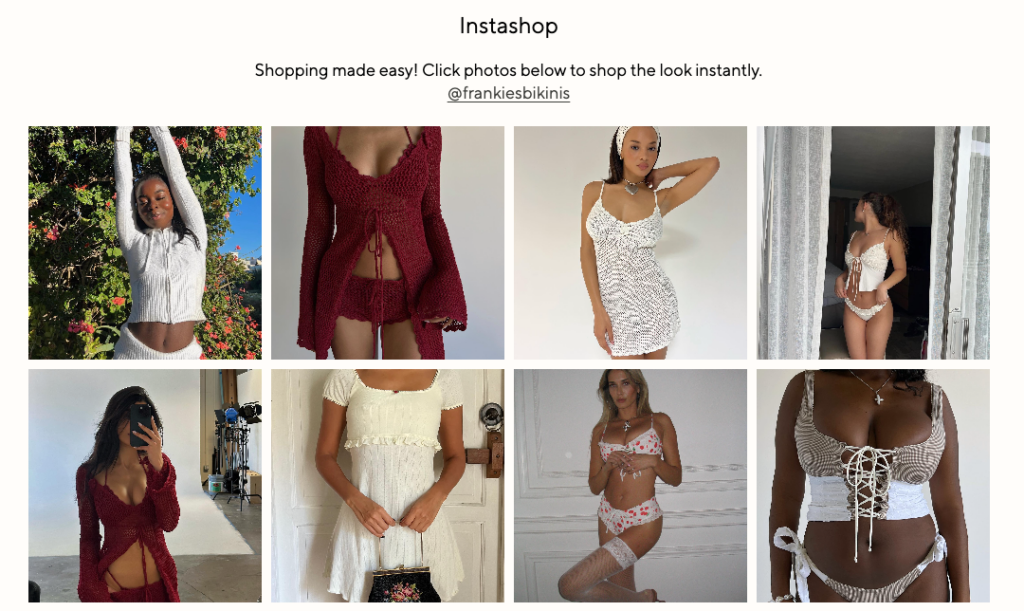
Brands can also look at their email and social media engagement. Which subject lines drive the most opens? What types of posts receive the most likes? Are people watching their videos all the way to the end, or are most of them leaving within the first thirty seconds? This kind of information helps brands identify gaps in their content strategy and create better experiences for their customers.
Lastly, brands with loyalty programs should deliver different types of content depending on customers’ membership and engagement levels. For example, they can run email campaigns to encourage customers to redeem their points or send different promotional offers depending on which VIP tier they belong to. This nurtures deeper connections with customers, as these strategies are based on their own interests and interactions.
Learn more about other loyalty program best practices – and pitfalls – by reading our latest article.
Tips for collecting customer data in every stage of the funnel
Acquisition
Brands should be careful not to immediately confront potential customers with polls, surveys, and other data collection tactics. While they want to learn more about the brand and its products before making a purchase, they don’t want to feel like they’re constantly being sold to. Brands need to be able to collect data without interrupting the user experience or creating barriers to conversion.
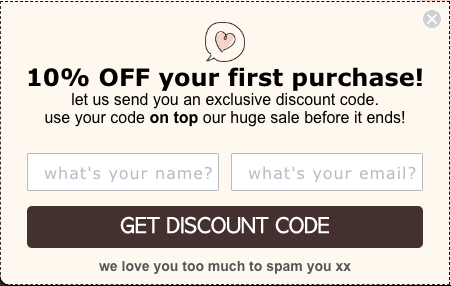
One common method is to create a form, usually as a pop-up and/or a section in the footer, asking customers for their email address in exchange for a discount on their first order. This is a low barrier to entry as customers receive an immediate benefit, can unsubscribe at any time, and are typically more open to sharing their email address than their location or payment details. With Stamped, brands can also incorporate this method into their loyalty program by rewarding customers with points as soon as they register. This helps the brand collect data and provide a reward before the customer even makes their first purchase.
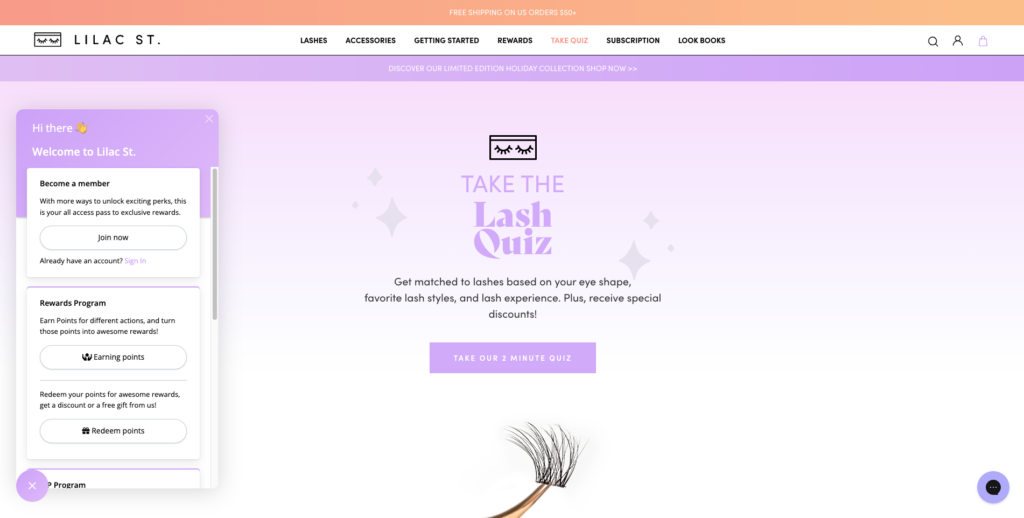
Another common tactic for collecting data in the acquisition stage is quizzes. Once customers create an account, brands can ask a few optional questions to better understand and address their needs. For example, an apparel brand might ask about their preferred style and fit, while a pet brand might ask about their pet’s dietary needs and birthday. This gives customers control over what information they share and helps contextualize how brands intend to use their data.
Lastly, brands can create preference centers where customers personalize what types of marketing emails they receive, which also helps brands learn more about what they’re interested in. This can include product news, upcoming sales and events, and special offers. Some preference centers also let customers specify email frequency or topics. For example, a sports equipment brand might ask customers what sports they play or what teams they follow and whether they prefer daily, weekly, or monthly emails.
60% of marketers don’t let customers choose which emails they receive and only 30% let customers choose email frequency. This can negatively impact their brand experience due to a lack of personalization, leading to churn.
Conversion
In the conversion stage, brands collect transactional data like shipping and payment information during the checkout process. They also start to build more detailed customer profiles based on what they purchased and how much they spent. For example, a supplement brand might differentiate customers who purchase vitamins from those who purchase protein powder, then create segmented retargeting strategies to encourage repeat purchases.
Brands also need to collect data in the pre-purchase stage where customers are about to make their first purchase but may still need one last push to convert. This includes browsing history, abandoned carts, and customer service interactions like support emails and chatbots. Brands need this information to understand and address customers’ concerns, then help them make their final purchase decision.

Lastly, brands should also follow up post-purchase to ask for feedback. With Stamped, brands can send review requests and NPS surveys to measure customer satisfaction and identify any issues they might have. They can also use Checkout Reviews to ask customers why they purchased something as soon as they’ve placed their order. They can implement a Q&A feature where potential customers ask questions and either existing customers or the brand itself can answer. Lastly, if they have a referral program, they can also ask customers to refer their family and friends to start collecting names and email addresses of potential customers.
This data not only helps brands gain deeper insights into purchase intent and customer sentiment, but can also be used to drive new business. 72% of customers won’t make a purchase until they’ve read reviews, and the presence of reviews can increase conversion rates for higher-priced products by as much as 380%.
Retention
Brands can drive re-engagement and repeat purchases with data in several different ways. First, they should leverage the information collected from prior consumer touchpoints. For example, they can use purchase history and quiz responses to send personalized recommendations. They can offer discount codes for a specific product category based on their preference center settings.
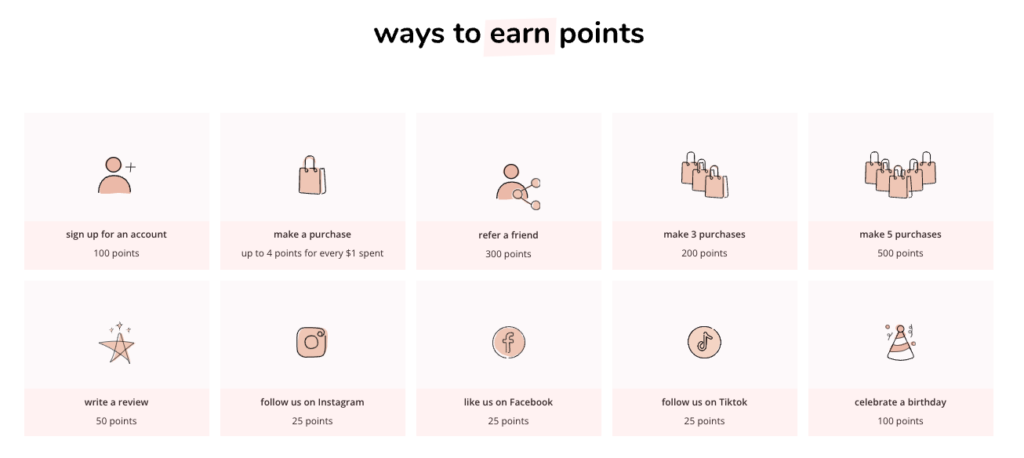
They can also collect more data in the retention stage by progressively asking for additional information in exchange for rewards. The best way to do so is by creating a loyalty program, where customers earn points by making purchases, writing reviews, answering surveys, and so on. For example, they can ask customers to answer a poll about what new products they’d like to see, then reward them with points that can be redeemed for a $10 discount.
This cycle of collecting data, using it to drive purchases through personalized content and incentives, and collecting even more data about customers as they make repeat purchases creates a feedback loop that benefits both brands and their customers. 75% of brands see significant increases in engagement and retention with data-driven marketing.
Looking for other ways to boost retention? Check out our complete guide to customer loyalty in every stage of the funnel.
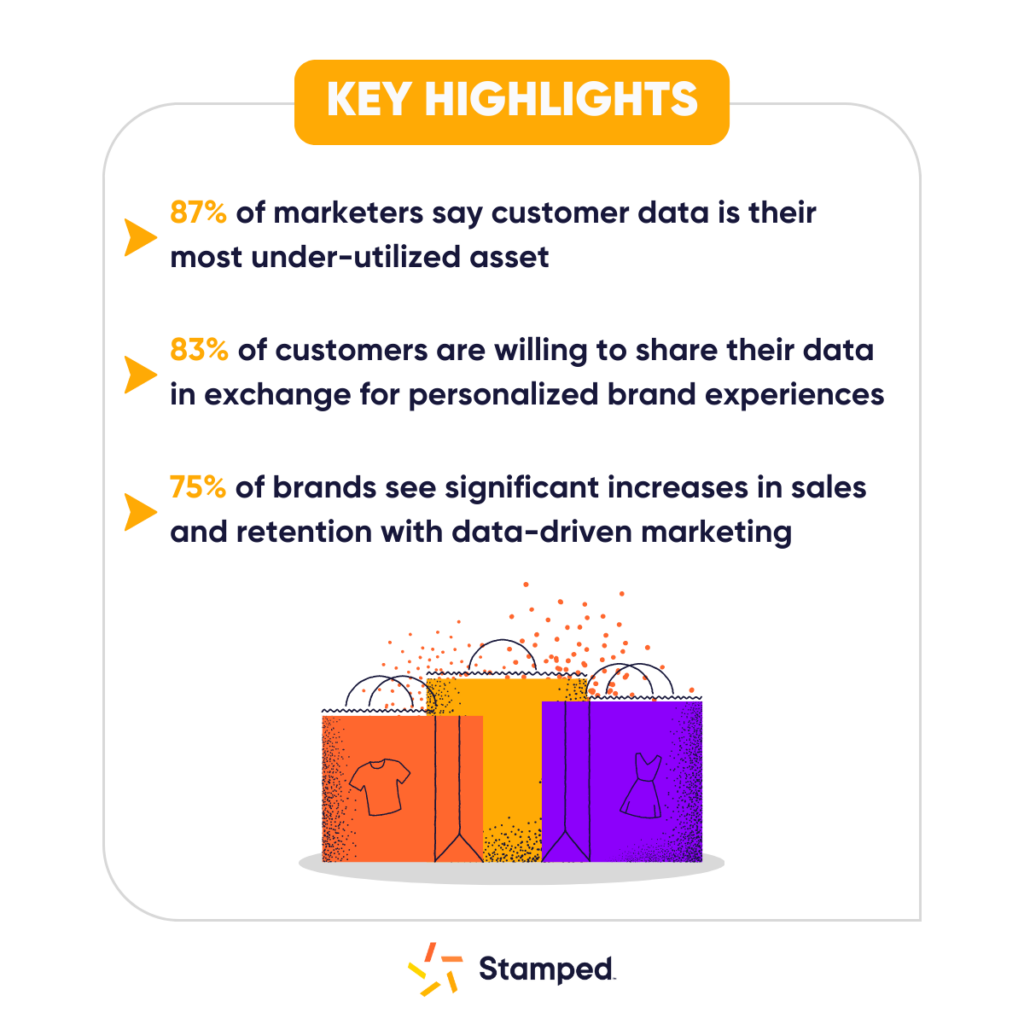
Capture and leverage valuable consumer insights with Stamped
Knowing how to collect and use customer data is key to running successful segmentation and personalization strategies for increased engagement, sales, and retention. Data helps reduce guesswork and inform decisions for accelerated business growth.
With Stamped, brands can capture, track, and analyze customer data through reviews, ratings, and loyalty programs. They can then turn this data into actionable insights for building better relationships with their customers. Book a demo with one of our sales reps to learn how.
Related Articles

The Psychology of Customer Reviews
In this article, we'll explore the psychology behind reviews: why people share their experiences, how social proof influences purchasing decisions, and what brands can do to encourage authentic review generation that builds genuine customer relationships.
by Aiden Brady
Customer Insights
Reviews

5 Metrics for Diagnosing Your Loyalty Program Health
In case you missed it, Stamped is on a mission to end "lazy loyalty"—it's our name for the type of programs that are never marketed in-channel and rely too heavily on generic, out-of-the-box settings.
by Aiden Brady
Loyalty

Comparing Loyalty Program Platforms: Who Does It Best? (2023)
Whether you’re looking to launch a new loyalty program or improve your existing one, there are several platforms available to choose from. Which one works best for your brand?
by Teala Beischer
Loyalty